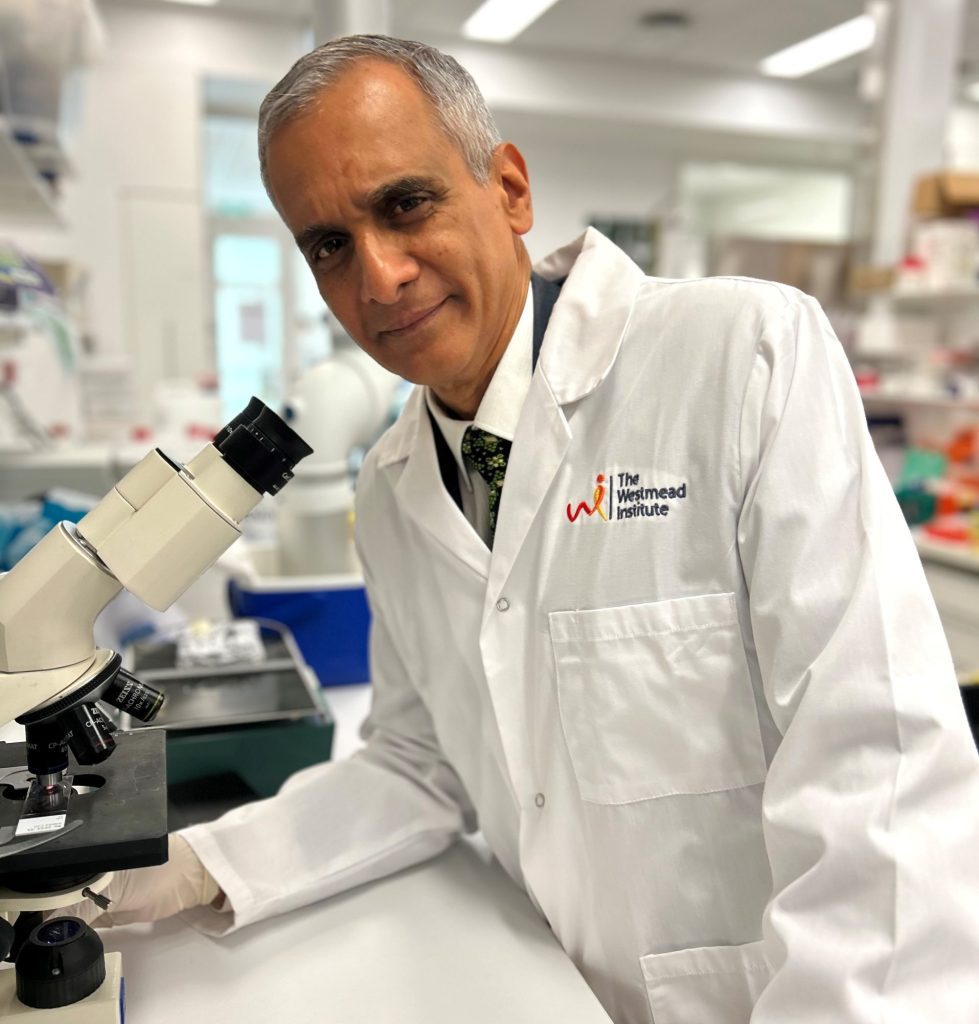Developing a novel treatment for liver cancer
Researchers at The Westmead Institute for Medical Research are developing a targeted treatment to deliver chemotherapy straight to liver cells that cause cancer.

In 1914, a researcher called John S. Dexter in Michigan, noticed a visible notch in the wings of some fruit flies. This observation eventually led to the discovery of the Notch gene and the mutation in the gene that caused the wing variation.
Later research showed that a ‘Notch signalling pathway’ is present in most animals. A range of genes can activate this pathway, which works a little like a telephone line that allows cells to talk to each other. This crosstalk may tell some genes to switch on or off. It also impacts the fate of cells by telling them whether to die, divide or grow.
Building on this knowledge, a novel liver cancer treatment is being researched by Professor Jacob George, Director of the Storr Liver Centre at The Westmead Institute for Medical Research (WIMR) and Westmead Hospital. WIMR has received a grant from the Office for Health and Medical Research. This funding from the NSW Government’s Medical Research Support Program, helps organisations with infrastructure costs to support their research projects.
Blocking signals that cause cancer
Overactivity of the Notch signalling pathway has been linked to multiple cancers, including liver cancer, which is on the rise in Australia and throughout the world. Certain genes are responsible for this malfunction, including a gene called Jag2. George’s research has shown that this gene is switched on in most people with liver cancer and has been shown to drive liver cancer growth.
“So, our novel treatment aims to block the actions of this gene,” George explains. “This may stop Jag2 from overactivating the Notch Pathway. It may also stop the gene from assisting liver cancer cells to grow. Using this approach, we hope to reduce or stop cancer growth in the majority of liver cancer patients.”

Targeting liver stem cells
Addressing the impact of liver stem cells is pivotal to this work. “Stem cells are a known ‘root’ of liver cancer development because they are capable of self-renewal, differentiation, and re-growth,” George points out. “The JAG2 gene regulates the maintenance and function of liver cancer stem cells and may even be a master regulator of those stem cells. Studies show the gene may confer growth advantages to liver cancer stem cells which make them more resistant to being killed by chemotherapy. This may be one reason that liver cancer is so difficult to treat.”
For this reason the work of George and his team, including Professor Liang Qiao, aims to eliminate liver cancer stem cells in order to slow or stop liver cancer development or progression. The treatment involves nanoparticles loaded with chemotherapy. “They will be targeted to deliver the chemo drug directly to the liver cancer stem cells to help stop them from growing,” says George. “This approach may also reduce treatment side effects, as the drug only enters targeted cells.”
To help identify the cancerous cells, a technique called “fluorescence-activated cell sorting” is being employed. It causes the cancer cells to light up with fluorescent colours. Using specialized equipment, the team can then isolate the fluorescent cancer cells for further analysis. Organoids (mini versions of a liver grown in the lab) have also been used to test the targeted chemo delivery. “If our data are promising, we hope to then conduct early-stage clinical trials,” says George who was named Outstanding Cancer Researcher of the Year in the 2021 NSW Premier’s awards.
Limitations of current treatments
Liver cancer is best treated by surgical removal, if this can be performed safely. “However, this is only possible in about 10% of cases,” George explains. “Other treatment options include ablation therapy (using microwaves to kill cancerous tissue or tumours), tablets that target tumour growth and immunotherapies (which stimulate the immune system to recognise and combat cancerous cells). “Yet although these therapies may slow down the growth of the cancer, in most cases it will eventually grow again,” says George. This is why researchers are investigating novel liver cancer treatments.
Liver cancer on the increase
In Australia, the number of new liver cancer cases have been climbing over the last four decades. “In that time–frame, cases of liver cancer have gone up about 12-fold while related deaths increased about 8-fold,” George observes.
“Liver cancer is currently the 5th most common and 3rd most lethal malignancy worldwide,” George points out. “On a global scale, the incidence and mortality rates of liver cancer are predicted to rise by more than 55% by 2040. It also has a poor 5-year survival rate. So, developing novel, more effective therapies is vital to improve the treatment outcomes of people with liver cancer, their lives and the lives of their families.”
Updated 9 months ago